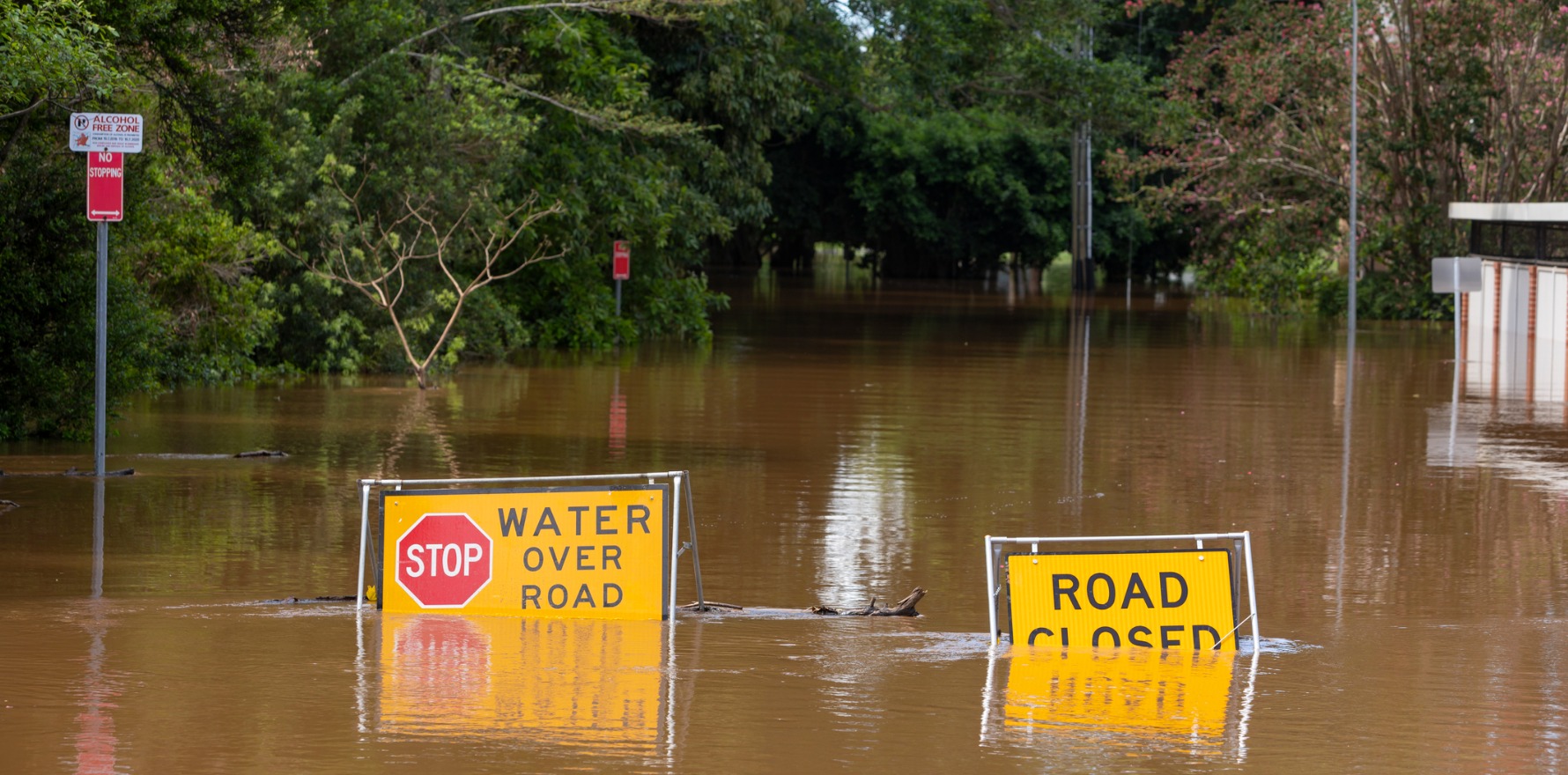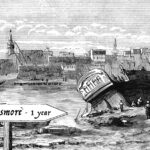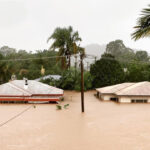The battered city marks a year today since its worst ever flood disaster – here’s how some of its health professionals are faring.
Most Lismore people will be able to tell you where they were a year ago today.
They had already spent a tense few days watching the skies as numerous weather systems collided, as the relentless rain fell and the water levels rose.
Long-time residents were well-versed in flood preparations – the city is Australia’s number one flood-prone postcode – and most had done what they could to protect their families and property from what they thought was coming.
Many were comforted by their resilience from the flood five years prior, when they had faced a flood peak of 11.59m and survived. They could be forgiven for thinking they were ready. After all, the 2022 flood peak was predicted to be lower.
But by about 3pm on 28 February, the flood peaked in Lismore at 14.4m – an all-time record and the worst flood disaster in Lismore’s history. Four people died and thousands of homes and businesses were decimated.
Dermatologist Dr Ken Gudmundsen’s 10-room clinic in Molesworth St was inundated by the water and destroyed. He lost just about everything.
A year on, and his Lismore Skin Clinic is operating out of two rooms in the St Vincent’s Hospital Medical Specialist Centre, which sits securely on higher ground. He thinks it is unlikely he will ever return to his old building, which remains empty and awaiting repair.
“They haven’t done any flood mitigation, they’re waiting for the end of 2024 when the CSIRO reports on it,” he said.
“Just imagine if you’ve got something wrong with your health and I say to you, ‘well come back at the end of 2024 and we’ll see how you go’, but then you died from a melanoma. I don’t know who’s got the luxury to do these things. We don’t. We are still playing catch-up and patients need to be seen and treated.”
Dr Gudmundsen feels the pressure. As one of only two dermatology clinics in the entire northern rivers region he knows that closing up altogether is not an option. He estimates he needs about $1 million to properly restore his practice, in terms of space, equipment and staff.
And he’s not the only one.
“I’ve spoken to colleagues in the health profession who are worried about going bankrupt and now they’re saying, ‘well, we probably won’t go bankrupt’,” he told The Medical Republic.
“But of course, you don’t want to survive. You want to thrive. That old mantra. And I’m the same. I’m in a place and I’m lucky to be in the place. But it’s too small. It’s not optimal, you can hear people through the walls. It wasn’t built for this purpose, and as grateful as we are, we need to have the space and the equipment to see more patients.”
Pharmacist Kyle Wood is another local health professional who is digging in. He bought his pharmacy, Southside Chempro Chemist in South Lismore, just six months before the flood hit. He had moved his young family to the area from Brisbane to set up a new life.
It was to be a baptism of fire.
“On day one [his first as new owner of the pharmacy] I was two hours into the day when they [NSW Health] announced covid lockdowns were starting that afternoon,” he said.
“It was a massive changeover. For four months I was working off excel spreadsheets and then two weeks later they opened covid vaccinations up to pharmacies.”
Since then, by his reckoning. he has delivered about 15,000 vaccinations.
“It was a wild ride,” he said.
Then came February 2022. He had bought the pharmacy knowing Lismore was in a flood zone, but was comforted by the knowledge that in 2017 the water had stopped 1.5m from his business’s suspended floor.
He was at his Goonellabah home, just outside Lismore’s CBD, with his pregnant partner, their young son and two dogs on 28 February.
“We knew it could flood in Lismore but we never knew it could go that high,” Mr Wood told TMR.
The pharmacy and his other business, a medical equipment hire service, were decimated by the flood. He estimates his repair bill to be around $1.5 million.
For the past year he has been running a makeshift pharmacy out of part of the building that has been repaired. The owner of the building, an interstate investor, eventually decided to sell and in a massive leap of faith, Mr Wood found the resources to buy it.
It helps that he is a qualified builder, a trade he learned to put himself through his pharmacy degree. And bit by bit, he is rebuilding. He has no plans to pack up and leave Lismore.
“It never once crossed my mind to walk away,” he said. “We are trying to be positive about everything, but there’s no getting around the adversity we’re all facing.”
Mr Wood said he had been overwhelmed by the camaraderie that had developed between the city’s health professionals and the wider community.
“The community support has been unbelievable and the fact that we can still keep going makes it important for me to maintain a positive attitude,” he said.
“Although our facilities are basic, we are still providing the services the community needs. And we need to keep going – a healthy community doesn’t exist without a robust healthcare system.”
In early February, the Australian and NSW governments announced they were each chipping in $2.5m in targeted support for eligible healthcare providers in Lismore whose practices and businesses had been affected by the flood.
Hosted by local MP Janelle Saffin, Federal Assistant Minister for Rural and Regional Health Emma McBride, and NSW Minister for Health Brad Hazzard made the joint announcement at Lismore’s Keen Street Clinic.
The clinic only properly reopened in January, after being almost completely inundated by the floodwaters. Keen Street GP Dr Nina Robertson told TMR earlier this month that the practice had to undergo significant works to get back up to scratch.
“Much of the town is still a construction site, so I guess we consider ourselves to be in the lucky number that have managed to get this far in the time that we’ve had,” Dr Robertson said.
The funding will be distributed in grants of up to $150,000 for general practices, allied health (including mental health), dental practices, pharmacies, private specialists, pathology providers, drug and alcohol treatment services and Aboriginal Community Controlled Health Services.
Applications from providers with exceptional circumstances above that threshold will also be considered. Grants will be provided to the North Coast Primary Health Network (PHN), Healthy North Coast for distribution.
The money will be spread thin. Out of 67 local primary care providers surveyed following the disaster, 58 practices, or close to nine out of 10, reported some flood damage.
In a statement announcing the initiative with his NSW counterpart Brad Hazzard, federal Health Minister Mark Butler urged health professionals to apply for the grant.
“Supporting primary care providers to recover benefits the entire Lismore community, ensuring locals can continue to see their own GP, dentist, mental health professional or pharmacist,” he said.
Mr Hazzard said he had visited Lismore soon after the floods and seen firsthand how “really awful” it was for the community.
“This funding will go some way to ensuring that people have access to important health, mental health, allied health and other services,” he said.
Ms Saffin said she has spent months lobbying NSW and federal government ministers for a funding lifeline to help GP clinics, specialists and pharmacists rebuild and stay in Lismore.
“Our medicos came to me for help, identifying major gaps in the grants-led recovery process,” Ms Saffin says.
“The NSW Rural Doctors Network estimates that about 25 health businesses and services were impacted by the floods – 10 severely and 15 moderately.
“Damage bills for some of these businesses runs to over the $1 million mark, including the loss of life-saving medical equipment.”
Ms Saffin said she was concerned about thousands of patients whose health was at risk if these practices were forced to close their doors or relocate elsewhere.
“The potential losses to Lismore were unthinkable; two of our biggest GP clinics, a cardiologist, gynaecologist and dermatologist,” she said.
“If patients could not access services and be diagnosed and treated early, it could result in some very poor health outcomes and even in loss of lives.”
It was a team effort that involved political push as well as lobbying from a determined group of Lismore’s primary healthcare providers and peak bodies such as the RDN, the AMA, the ACD, the RACGP, ACRRM and the Pharmacy Guild of Australia.
With the assistance of the NSW Rural Doctors Network and the AMA, the group of Lismore healthcare practitioners put together a grant proposal last year, which recommended the state government make a healthcare specific business grant available to all non-government primary health services and businesses.
The proposed grant would be sufficient to cover the losses caused by the floods, as well as compensate practitioners for lost income. They estimated about $15m was needed to properly rebuild.
“We asked for 15 [million] and we’ve got a third of that,” said Dr Gudmundsen.
“It is certainly better than nothing. I think it’s going to be interesting to see how it all turns out. There’s a fair bit of fine print, like if you have already received a grant, you might not be eligible for the full $150,000.”
According to the Flood Recovery Infrastructure Grants Program 2023 details available on the North Coast Primary Health Network (PHN), Healthy North Coast website, applicants who have received support under the Disaster Recovery Funding Arrangements (DRFA) and/or other NSW government grants can still apply for a grant, but any financial support already received will be taken into account.
“For example, if you apply for $80,000 to replace flood-damaged equipment and have already received $20,000 under DRFA or NSW grant support, $60,000 may be available under the Flood Recovery Infrastructure Grants Program,” it states.
“Where a grant applicant has been highly impacted and has extensive rebuilding, repair, or relocation costs exceeding $150,000, an application can be submitted for a higher funding amount and will be evaluated by Healthy North Coast on a case-by-case basis.”
Grant funding is available only for costs relating to damage to premises or equipment that was uninsured or for which insurance was prohibitively expensive.
Dr Gudmundsen said he would still apply for a grant and hope for the best. Keeping positive has been a challenge but he is determined to stay grounded.
“Lots of people are still flood affected,” he said.
“My own mental health has been touch and go at times but I do things to keep myself healthy like exercise and play guitar, and I try to stay hopeful. The whole town is still struggling and we are all feeling a bit betrayed by the people who should be looking after Lismore better.
“I talk to patients every day who say similar things. Many are leaving Lismore because they are just depressed from the lack of progress. We don’t want to be forgotten.”





